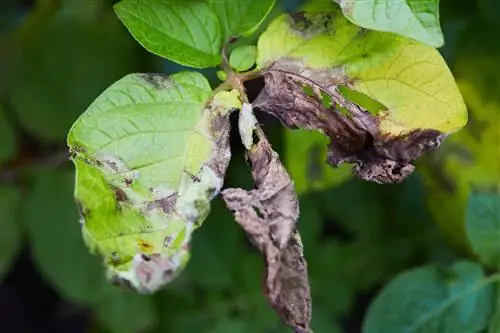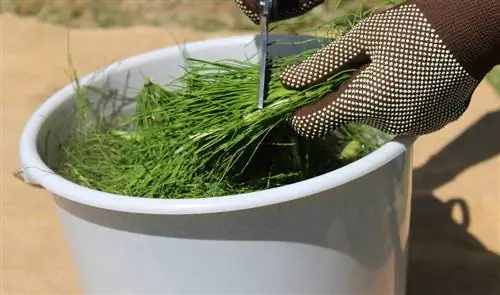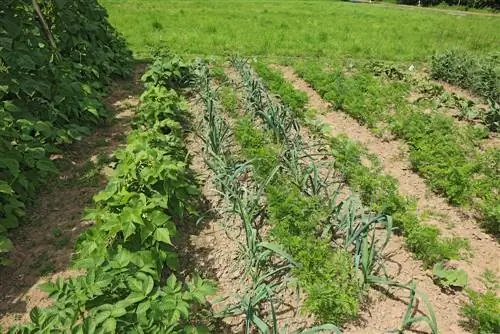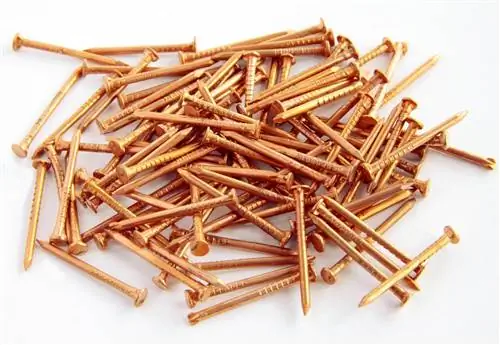- Author admin [email protected].
- Public 2023-12-16 16:46.
- Last modified 2025-01-23 11:19.
Powdery mildew rarely occurs on potatoes as they are usually harvested before the summer heat. What is feared, however, is downy mildew, which is mainly called late blight and brown rot in potatoes. This fungus caused the Irish famine of 1845.

How do I recognize downy mildew on potatoes?
Downy mildew, commonly referred to as late blight in potatoes, is first recognized by brown spots on the leaves. The affected leaves rot in wet weather or dry up in heat. A gray fungal lawn forms on the underside of the leaf.
What is the cause of late blight in potatoes?
The cause of the disease is theMildew fungus Phytophthora infestans It overwinters in the potatoes and spreads after the infected tubers are planted. After these infected potatoes sprout, the fungus also grows upwards on the stem. In addition, spores form on the infected potatoes in moist soil conditions. These are distributed with the soil water and infect the other tubers.
How can I fight late blight?
The first thing that helps against late blight on potatoes isRemoving the affected parts of the plant However, since the potatoes will no longer grow if the weeds are removed, you should do this gradually carry out. Always remove leaves that have just rotted or dried up. In addition, spray solutions made from garlic broth can inhibit the spread of fungal spores.
How do I avoid downy mildew on potatoes?
When growing potatoes, you canprevent downy mildew or reduce the infestation by taking several measures before planting. When planting, pay attention to the correct distance between the individual tubers. Consider crop rotation and do not plant potatoes after other nightshades such as tomatoes. If you have already had problems in the garden with late blight and brown blight, use insensitive or resistant varieties such as CIP-Matilde, Twister or Annabell.
Tip
Pre-germinating potatoes
Pre-germinating the seed potatoes is very helpful. This means that the tubers have a clear head start in development and ripen before harmful fungi can spread. To do this, place the tubers in a box four weeks before planting and place them in a bright location with moderate temperatures.






